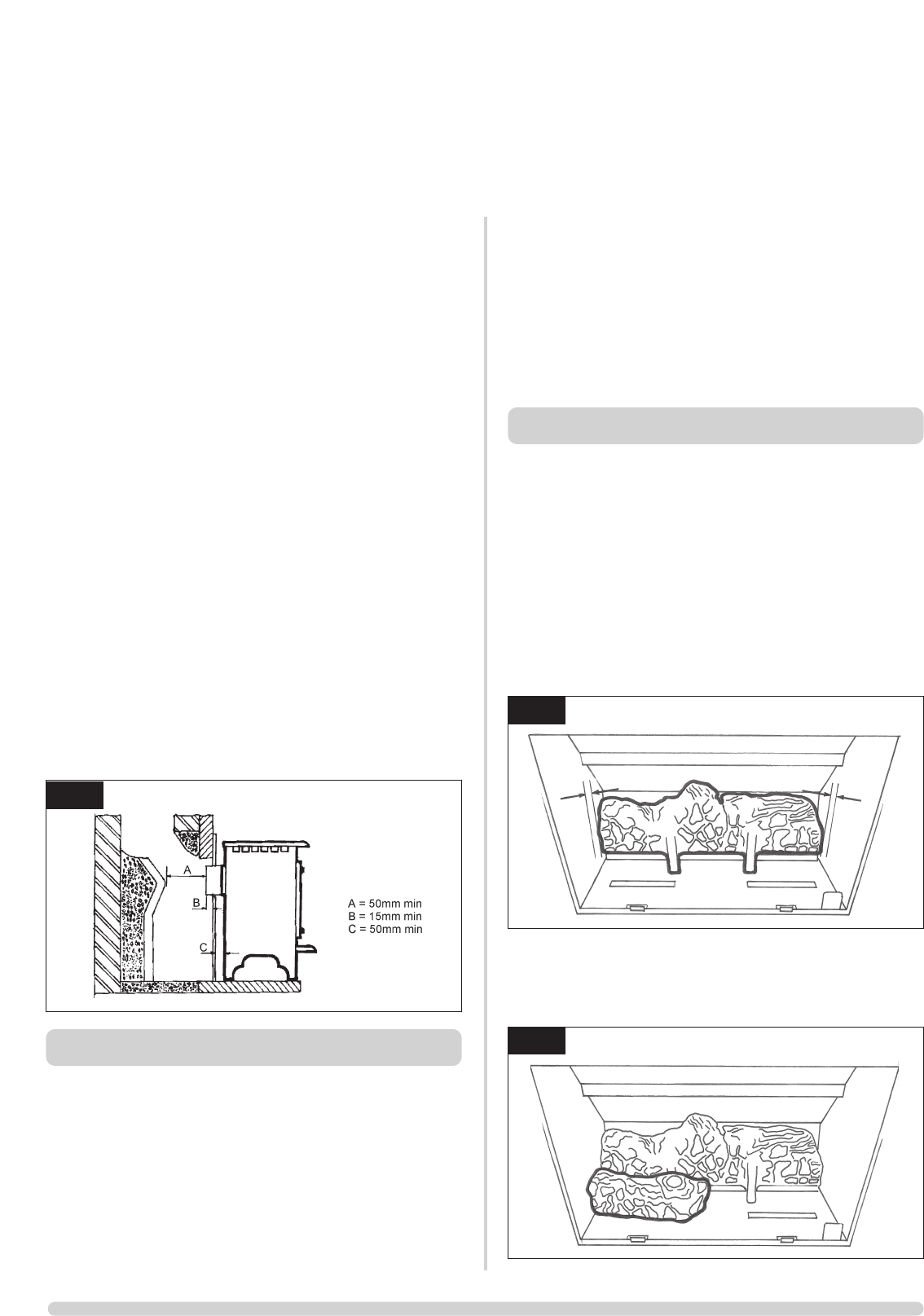
in and around the appliance before and after working on it.
When servicing the appliance it is recommended that the
replaced items are not broken up, but are sealed within
heavy duty polythene bags and labelled as RCF waste.
RCF waste is classed as stable, non-reactive hazardous waste
and may be disposed of at a licensed landfill site.
Excessive exposure to these materials may cause temporary
irritation to eyes, skin and respiratory tract; wash hands
thoroughly after handling the material.
5. FUELBED ARRANGEMENTS
Remove the cast iron door using the tool provided. The
main ceramic components are inside the firebox.
NOTE: THE CAST IRON DOOR IS HEAVY, TAKE
EXTREME CARE WHEN HANDLING TO AVOID
DAMAGING THE OUTER CASING.
The fuel bed consists of 5 logs and 2 ash panels. The logs
have letters A,B,C,D and E moulded into them for
identification.
5.1 Take the rear log A and place it up against the rear of the
fire sitting on the two flat ledges of the burner. The two legs
of the log should sit between the rear burner ports. See
diagram 3. Ensure an equal gap between each side of the
log and the side of the firebox.
5.2 Place log B on the left-hand side of the burner with the
location bar on the underside of the log fully located in the
long slot of the burner. Make sure the log is as far to the left
as possible. See diagram 4.
11
3.6 The flue system may now be connected to the stove. Ensure
that all joints are sealed with a suitable fire resistant sealant.
It is also recommended that a physical retention method be
used at the flue spigot joint, self-tapping screws being
favoured.
3.7 Connect a suitable pressure gauge to the test point located
on the inlet fitting, and turn the gas supply on. Light the
appliance and check all gas joints for gas soundness. Turn
the appliance to maximum and check that the supply
pressure is as stated on the databadge. Turn the gas off and
replace the test point screw. Turn the gas on and check the
test point for gas soundness.
CLOSURE PLATE INSTALLATION
NOTE: The stove is also suitable for installation onto a fireplace
opening. The following method illustrates how this can be
achieved with the aid of the optional closure plate and
spigot extension. Ensure the fireplace dimensions are as
shown in diagram 2.
3.8 Place the closure plate against the fireplace opening and
ensure that there is sufficient overlap around the perimeter
to allow a fume tight seal to be made. Cut straight across the
top of the plate if trimming is required.
3.9 Seal the plate to the opening and the hearth with a suitable
heat resisting material. Ensure that any relief opening at the
bottom of the plate is left unobstructed.
3.10 Secure the spigot extension to the engine assembly and seal
with heat resisting tape or similar. Position the engine
assembly ensuring that the 50mm rear clearance is
maintained, then proceed with the installation as detailed in
points 3.2 to 3.7 above. See diagram 2.
4. HANDLING & DISPOSAL OF FIRE CERAMICS
The fuel effect and side panels in this appliance are made
from Refractory Ceramic Fibre (RCF), a material which is
commonly used for this application.
Protective clothing is not required when handling these
articles, but we recommend you follow normal hygiene rules
of not smoking, eating or drinking in the work area and
always wash your hands before eating or drinking.
To ensure that the release of RCF fibres are kept to a
minimum, during installation and servicing a HEPA filtered
vacuum is recommended to remove any dust accumulated
INSTALLATION INSTRUCTIONS
INSTALLATION
2
AR0377
3
AR1610
4
AR1611


















